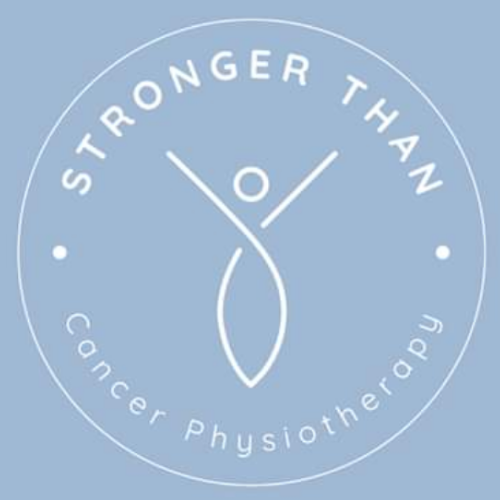Online Physiotherapy: how does it work?
“Physiotherapy through a camera - surely not?!”
I have always been particularly fascinated in the history of medicine and physiotherapy (which I will certainly delve into in a separate blog post!). Since physiotherapy began, it has followed a similar pattern of delivery: face-to-face. However, with both the development of technology and the current global landscape - the need and prevalence of telehealth has grown massively.
What is telehealth?
For most of us in 2020, we have access to everything at our fingertips - across our smartphones, tablets and laptops. From chatting with family and friends to ordering your weekly supermarket delivery, technology has revolutionized every facet of life! When it comes to healthcare however, it can be difficult to move away from traditional approaches. But change is critical for our healthcare systems to keep up with increasing demands from our growing and longer-living populations.
Telehealth has been around for longer than you may think. An article written for The Lancet in 1879 describes the use of a telephone consultation, in which a doctor listened to a child’s cough over the telephone. They were able to diagnose croup and avoid an unnecessary office-based appointment. Over 140 years later, this idea is as true as ever.
Some of the key benefits of telehealth include:
Less money and time spent travelling
Less hours spent in busy waiting rooms
Receiving timely advice in the privacy and comfort of your own home
For those who are working or have children, telehealth can reduce the need for juggling child-care and afternoons off work. You can fit your appointment into your own schedule: when the kids have gone to bed, between shifts or even at the weekends!
For those going through chemotherapy, video-consultations will reduce risk of infection from additional face-to-face appointments. It is also an important alternative for those struggling with fatigue and breathlessness, made worse by unnecessary travelling.
Some people may also be unable to get the physiotherapy advice they need during and after cancer treatment, because of where they live. It's a postcode lottery out there and you may not have specialist cancer services accessible to you. Enter strongerthan!
Hands-on therapy
I think one of the trickiest things for people, is that physical touch is taken out of the equation during video physiotherapy appointments. However this is one of my favourite things about telerehabilitation! It can be easy to spend a large chunk of an appointment providing hands-on therapy for short-term relief and neglect the educational aspect of rehabilitation. I am a huge advocate personal autonomy, lifestyle medicine and supporting patients to feel confident self-managing their condition – all of which can be done effectively on the telephone or by video-calling.
While massage and manual therapy are important modes of treatment in the right context – these cannot be used in isolation, with the expectation of resolving the problem long-term.
(Note: it is my duty of care to let any potential client know if I feel they require hands-on assessment or treatment that cannot be provided by telehealth).
To effectively relieve a physical symptom, the cause must be identified. From this, treatment will include education on the problem, a personalised exercise programme, plus general exercise and lifestyle advice. Despite some obvious differences, online physiotherapy works in the same way as traditional alternatives. If you don’t implement the advise and exercises between physiotherapy sessions, your problem is unlikely to resolve in the long-term - and no number of massages that will change that!
Goal setting
Goal setting is another important part of your physiotherapy assessment. Agreeing on realistic, specific aims, that mean something to the person receiving the physiotherapy is key to treatment. I always want to know what my clients are hoping to achieve with physiotherapy and what they would consider “a success”. No physiotherapist wants to hear their client’s problem is not getting better! Although treatments and exercises can be tweaked to be the most effective, sometimes unrealistic expectations can be the reason for disappointment. The power of talking and education must not be overlooked!
For example, if my client is feeling frustrated at their lack of progress at 3 weeks after surgery, it would be important for us to re-frame the situation. Explaining the healing times and the basic biology behind this, will provide a more realistic time-frame in which they may expect to see progress. I would also want to identify my client’s larger goals and break this down into smaller goals, to keep them motivated and engaged in their recovery.
The evidence
There is a fair body of research supporting telehealth, which is important for evidence-based practice. A randomised trial conducted in 2013, was the first piece of research to explore and support the role of telerehabilitation in breast cancer survivors, using a web-based platform called e-CUIDATE.
A systemic review from 2018 found that telerehabilitation for post-surgical patients is a feasible, equally-effective way of providing physiotherapy and improving quality of life. Another systematic review from 2017 also found telerehabilitation for cancer patients is an important option for providing personalised, supportive care – some patients even found they could open up to health-professionals more comfortable than they would in person. Fabulous news!
The future of telerehabilitation
Covid-19 has forced us to look at life differently, particularly within healthcare. With less face-to-face appointments, telephone and video consultations have become common-place. I was recently invited to join Physios Online, a group of like-minded, experienced physiotherapists from a variety of specialties, who all offer video-consultations - and will be here to stay long after Covid-19!
So, ‘does online physiotherapy work’ - my answer is yes! For anyone who felt unsure, I hope you are feeling reassured and interested in the benefits. Living in a technological world where robots are performing surgeries and landing on the moon, having your physiotherapy on a laptop doesn’t seem quite so crazy!
Stay strong.
Hannah
……………………………………………………………………………………
Discover how strongerthan physiotherapy can help you through your cancer treatment.
Visit Physios Online for further information on online physiotherapy for different specialities,
……………………………………………………………………………………
Resources
Totten AM et al. (2016) Telehealth: Mapping the Evidence for Patient Outcomes From Systematic Reviews Technical Briefs, No. 26. 2016 Jun.
Nesbitt TS. (2012) ‘The Evolution of Telehealth: Where Have We Been and Where Are We Going?’ In ‘The Role of Telehealth in an Evolving Health Care Environment: Workshop Summary.’
S H Aronson (1977) The Lancet on the telephone 1876-1975. Med Hist. 21(1): 69–87.
Noelia Galiano-Castillo, et al. (2013) Telehealth system (e-CUIDATE) to improve quality of life in breast cancer survivors: rationale and study protocol for a randomized clinical trial. (14)187.
Cox A et al. (2017) Cancer Survivors’ Experience With Telehealth: A Systematic Review and Thematic Synthesis. J Med Internet Res. 19(1) e.11.
van Egmond MA et al. (2018) Effectiveness of physiotherapy with telerehabilitation in surgical patients: a systematic review and meta-analysis. Physiotherapy. 104(3):277‐298.



